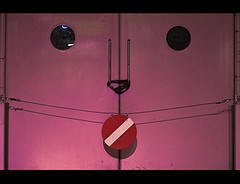The Value of Silence in Class Discussions
 Mary M. Reda’s essay, “What’s the Problem with Quiet Students? Anyone? Anyone?” in the Chronicle of Higher Education a couple of weeks ago offers a revealing look at the reasons some students choose not to participate in class discussions. Reda engaged in a yearlong investigation of the quiet students in her composition courses, asking her students to write about “their experiences of classroom silence” and interviewing several quiet students about their experiences. Her findings are fascinating.
Mary M. Reda’s essay, “What’s the Problem with Quiet Students? Anyone? Anyone?” in the Chronicle of Higher Education a couple of weeks ago offers a revealing look at the reasons some students choose not to participate in class discussions. Reda engaged in a yearlong investigation of the quiet students in her composition courses, asking her students to write about “their experiences of classroom silence” and interviewing several quiet students about their experiences. Her findings are fascinating.
Most students who choose not to speak in class do so because they “understanding speaking in class to be a high-stakes testing situation.” That is, they perceive their instructions to be judging the quality of their verbal responses, particularly in classes where class participation is part of the grade. Instead of taking the risk that they’ll be wrong, these students choose not to participate. Reda now tries to communicate to her students that in her class, discussion is not a form of “verbal testing” but a method of “constructing knowledge.”
Reda also found that some students benefit greatly from quiet thinking during class:
“Recognizing that silence can be an active, generative space, those students agree with a small group of theorists who argue that silence can invite meditation, contemplation, and engagement. In other words, silence—along with dialogue—fosters learning.”
Reda now makes time for silence during her classes. She has her students engage in free-writing during class, builds time for quiet reflection into discussions, and asks her students “to frame their comments in light of classmates’ contributions” in order to help them learn to listen.
What are your thoughts on students who don’t speak up during class? Do Reda’s findings help you think differently about the role of silence in the discussions you lead?
For more on this topic, see our teaching guides on discussion-leading and contemplative pedagogy.
Image: “Pink door says No Talking!” by Flickr user Tony Eccles, Creative Commons licensed.

Leave a Response